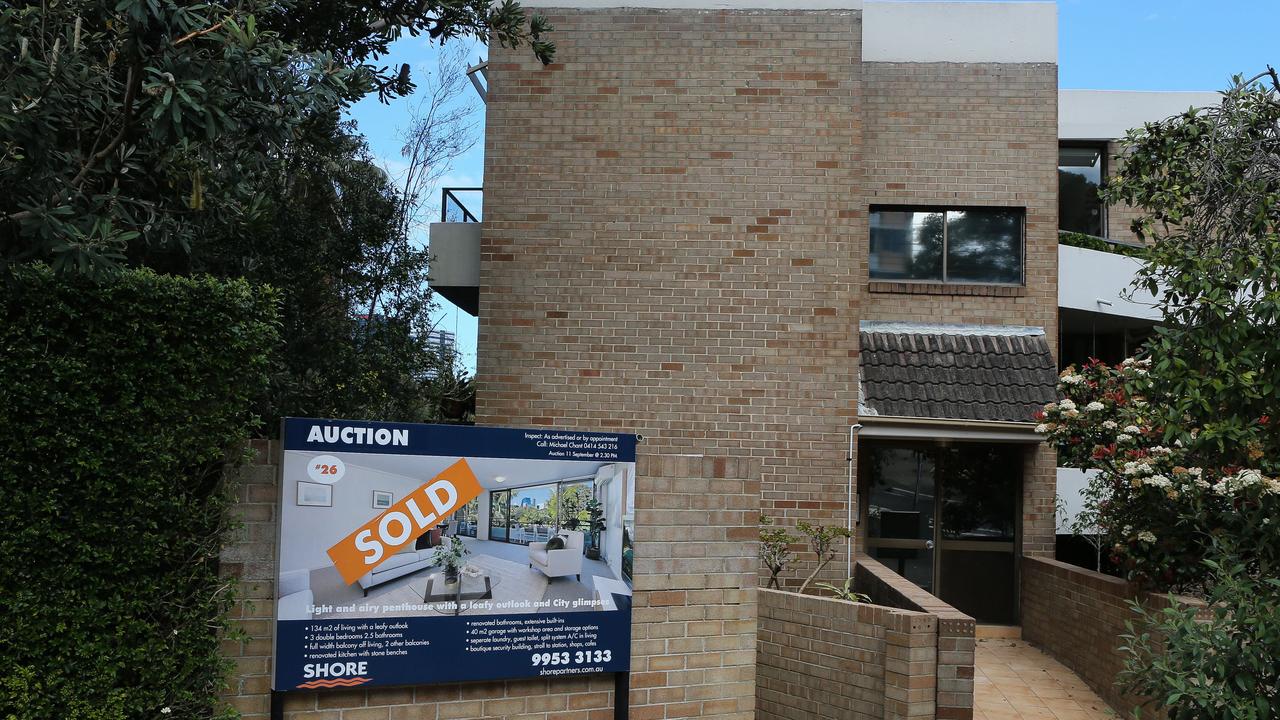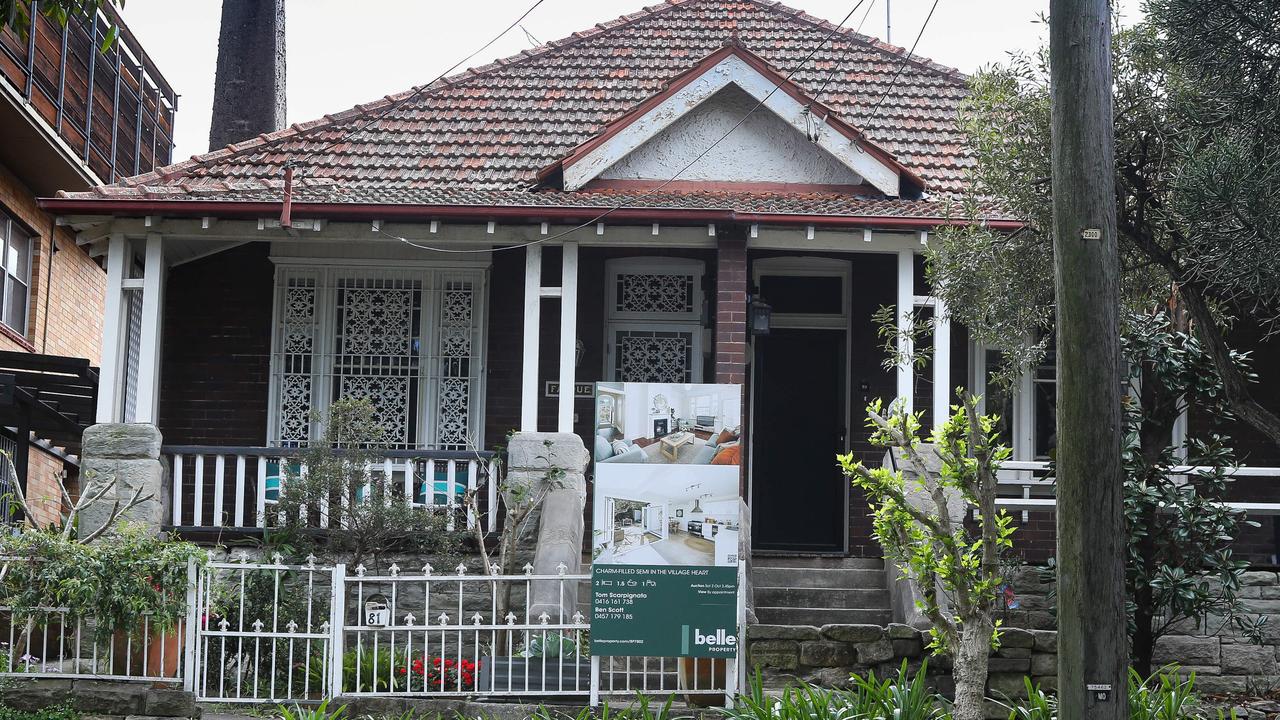Australian property: Alarming housing affordability issues with huge price gap in units and house
A new problem is emerging in property markets across the country, and it’s bad news for anyone who is trying to buy a house.

Huge differences in the value of houses and apartments in Australia have exposed the affordability crisis that is plaguing homebuyers – and some may struggle to ever own a freestanding home.
In some of Australia’s swankiest suburbs, unit prices would be barely enough to cover a deposit for a house in the same area, with apartments worth a little over a fifth of house prices.
But for once the Aussie suburb that tops the list for the biggest disparity between unit and house prices isn’t in Sydney.
Instead it is Mosman Park in Perth, where apartments cost on average almost $385,000, compared to a median house price of around $1.7 million – leaving apartment prices at 21.4 per cent of the price of nearby houses.
“In other words, the full value of a unit in the LGA would be a little more than a standard house deposit in the same region,” said CoreLogic’s head of research Eliza Owen.

The Sydney suburb of Strathfield comes in second, where the median unit price sits at just over $662,000, equating to 23 per cent of the cost of houses in the area, which go for over $2.8 million.
In the Melbourne suburb of Stonnington, which has seen over 1000 properties come on to the market in the last four weeks, apartments are worth a quarter of the price of houses. A unit in the area sells for a median value of almost $653,000, while a house is worth a whopping $2.5 million.
And in the suburb of Walkerville in Adelaide, unit prices are almost a third of the price of a house in the same area, going for $410,000 as opposed to $1.3 million for a house.
Diversity versus being struck
Ms Owen said there’s a higher density of relatively cheap stock due to a large number of apartments in those areas, meaning it can accomodate greater socioeconomic diversity for living closer to the CBD.
“But looking at the change in unit values as a portion of housing over time, it shows apartment owners in the current market would be able to put less towards a house than they could five years ago,” she said.
“This would be particularly frustrating for those looking to start families, or seeking more space.”

But the price difference between apartments and houses is closer in some parts of Australia.
In Brighton, Hobart, the price of a unit is around 82 per cent the median house price. The same difference in value is similar in Playford in Adelaide as well as the Blue Mountains in Sydney.
Ms Owen said affordability in the property market had worsened as apartment values failed to keep up with the pace of rising house prices.
“The situation poses a particular barrier for those looking to upgrade from apartments to houses, with national house values increasing 22.9 per cent in the 12 months to September, compared to a 12 per cent lift in unit values,” she said.
Spring selling season
New listings have surged 28.2 per cent nationally in the last four weeks, amounting to more than 45,000 new properties added to the market.
While it could offer relief to buyers who have been struggling to get into the market due to scarce availability of properties, CoreLogic found where the houses are located might not be the best news.

It found that the new listings are either in places in Australia where people don’t want to buy or come from vendors trying to offload properties that have not seen high levels of demand.
Covid has seen a preference for detached houses as working from home becomes more popular.
While 71.7 per cent of the 45,000 properties added to market over the past four weeks were houses, this is down from a five-year average where houses typically make up 74 per cent of new listing campaigns.
However, unit listings freshly added to market have risen 39 per cent in the past four weeks, compared to a 24 per cent rise in new house listings.
“Compared with the pre-Covid five-year average, new house listings are still trending 5.5 per cent lower. Meanwhile, unit listings are trending 11.2 per cent higher,” Ms Owen said.

The biggest rise in listings occurred in Melbourne with the suburbs Stonnington, Booroondara, Moreland and Casey, while in Sydney, Canterbury-Bankstown led the way.
“Most of the regions with the biggest listings uplift in the past four weeks are concentrated across Melbourne and Sydney,” Ms Owen said.
“These include markets that have been associated with more subdued capital growth, such as Melbourne’s Wyndham council, where values are 5.8 per cent higher over the year, and Stonnington, where values have risen 8.3 per cent, compared to a Melbourne-wide uplift of
15 per cent in dwelling values.”

But surprisingly there has been a big jump in listings in some markets that have been extremely popular through the pandemic, such as the Mornington Peninsula in Victoria, she added.
There have been 261 properties put up for sale in the last month in the Mornington Peninsula, which has experienced a rise in value of 35 per cent in the last year.
“The same can be said for the northern beaches of Sydney, where dwelling values have increased 37.2 per cent in the same period, and listings campaigns have increased by 112 in the past four weeks,” she said.
But the highest growth in listings still seems concentrated in less desirable markets for owner-occupiers, such as in the unit segment and across high investor concentrated markets across
Sydney and Melbourne, she added.
“While there are signs vendors are responding to the high price growth in some of the popular or coastal markets, which could create more bargaining power for some buyers, listings volumes are in many cases still well below historic averages,” she said.





